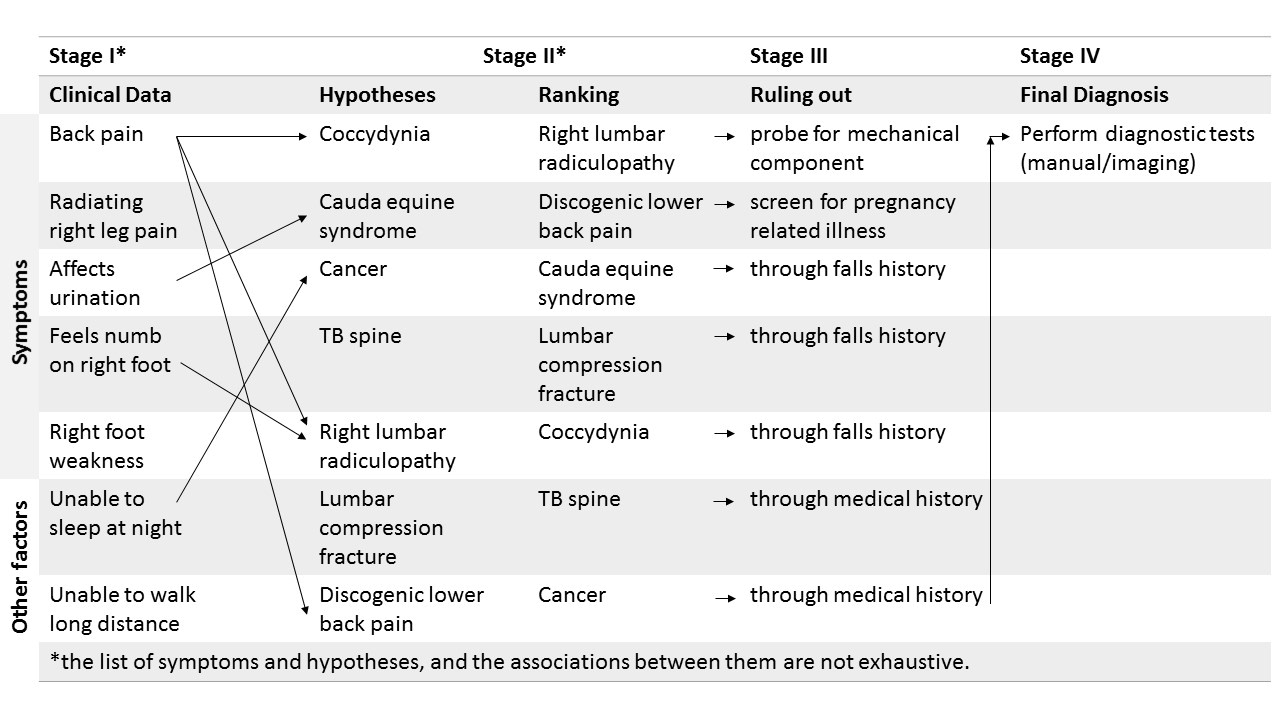Diagnosis is a process that involves collecting data about one’s illness (collate their symptoms) and determine their anatomic, physiologic and/or psychosocial derangement (usually called disease) in order to direct a clinician toward offering specific treatments.
There are four methods of diagnosis:
- Gestalt/Pattern recognition method: involves immediate recognition of a patient’s presentation based on a clinician’s past experience in identifying a similar pattern of disease.
- Exhaustive evaluation method: involves collecting all medical facts about a patient by completing a detailed subjective, physical and clinical examination to come to a final diagnosis.
- Algorithm method: involves asking a relevant but broad question and follow up the individual through pre-determined logical/evidence-based steps in order to reach a final diagnosis.
- Hypothetico-deductive method: involves formulating multiple hypotheses (a list of probable diagnoses), followed by performing relevant clinical tests to arrive at a final diagnosis.
There are multiple ways to apply the hypothetico-deductive method of diagnosis. Here, I have explained a ‘symptom guided – probability driven’ model to apply this diagnostic method.
Stage I: The symptoms reported by patients are collated to form a single hypothesis. Also, a single symptom can bring forth multiple hypotheses. Any relevant clinical data is utilised in this stage to support making a hypothesis.
Stage II: The list of hypotheses (potential diagnoses) are ranked based on success probability. A potential diagnosis that has the highest probability of becoming true/success is ranked as first. Such prioritisation is best done by considering the strength of association between the symptoms/relevant clinical data and the hypotheses.
Stage III: Conduct a focused subjective and objective examination to rule out the diagnoses that are less likely to be true. At this stage, you will arrive at a diagnosis by working your way up (by ruling out) the list of hypotheses generated.
Stage IV: Finally, perform a highly sensitive (most accurate) diagnostic test to confirm a diagnosis.

References:
- Reed, R.L., 1992. Clinical Epidemiology: A Basic Science for Clinical Medicine. The Journal of the American Board of Family Practice, 5(6), pp.660-660.
- Evans, C. and Kakas, A.C., 1992. Hypothetico-deductive Reasoning. In FGCS (pp. 546-554).
- Coderre, S., Mandin, H., Harasym, P.H. and Fick, G.H., 2003. Diagnostic reasoning strategies and diagnostic success. Medical education, 37(8), pp.695-703.
- Malanga, G.A. and Mautner, K., 2016. Musculoskeletal physical examination: an evidence-based approach. Elsevier Health Sciences.
- Waddell, G., McCulloch, J.A., Kummel, E. and Venner, R.M., 1980. Nonorganic physical signs in low-back pain. Spine, 5(2), p.117.